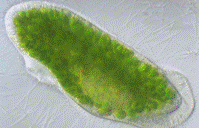Biological Sciences, School of

School of Biological Sciences: Faculty Publications
Document Type
Article
Date of this Version
2013
Citation
Genes Genomes Genetics, Volume 3, June 2013, pp. 993
Abstract
Genome-wide patterns of diversity and selection are critical measures for understanding how evolution has shaped the genome. Yet, these population genomic estimates are available for only a limited number of model organisms. Here we focus on the population genomics of the pea aphid (Acyrthosiphon pisum). The pea aphid is an emerging model system that exhibits a range of intriguing biological traits not present in classic model systems. We performed low-coverage genome resequencing of 21 clonal pea aphid lines collected from alfalfa host plants in North America to characterize genome-wide patterns of diversity and selection. We observed an excess of low-frequency polymorphisms throughout coding and noncoding DNA, which we suggest is the result of a founding event and subsequent population expansion in North America. Most gene regions showed lower levels of Tajima’s D than synonymous sites, suggesting that the majority of the genome is not evolving neutrally but rather exhibits significant constraint. Furthermore, we used the pea aphid’s unique manner of X-chromosome inheritance to assign genomic scaffolds to either autosomes or the X chromosome. Comparing autosomal vs. X-linked sequence variation, we discovered that autosomal genes show an excess of low frequency variants indicating that purifying selection acts more efficiently on the X chromosome. Overall, our results provide a critical first step in characterizing the genetic diversity and evolutionary pressures on an aphid genome.


Comments
Copyright © 2013 Bickel et al.